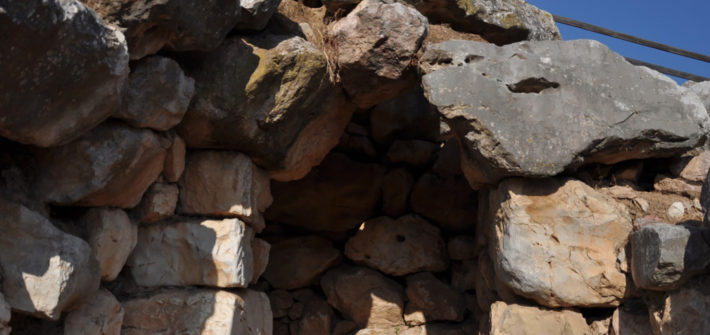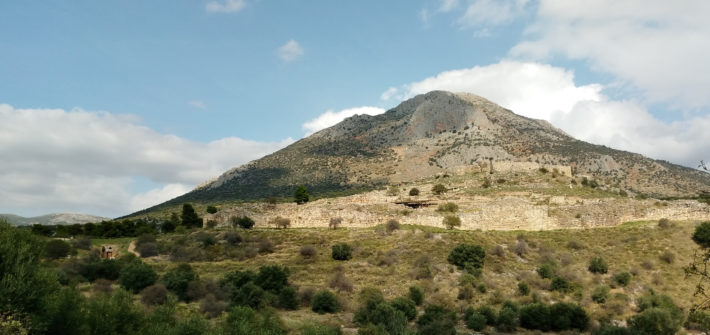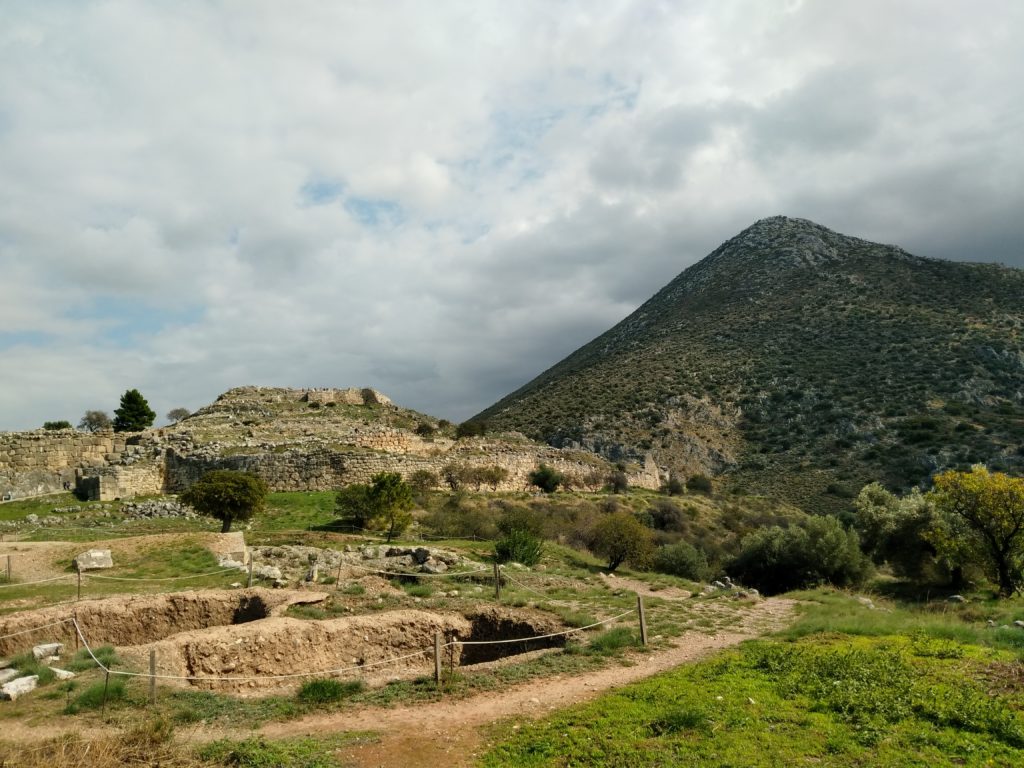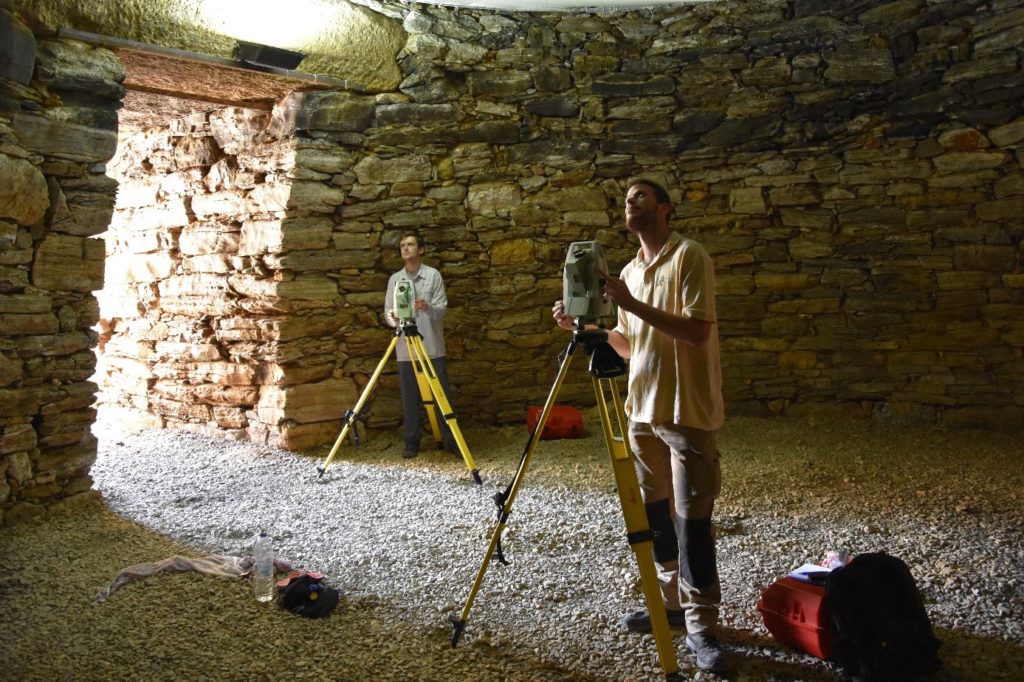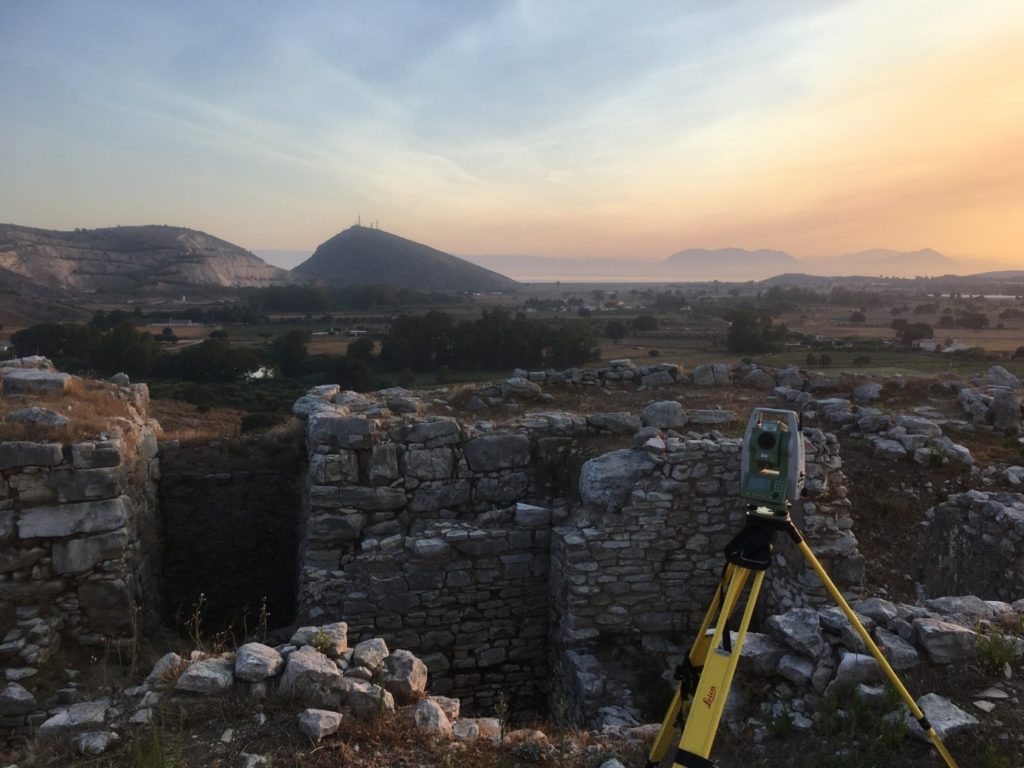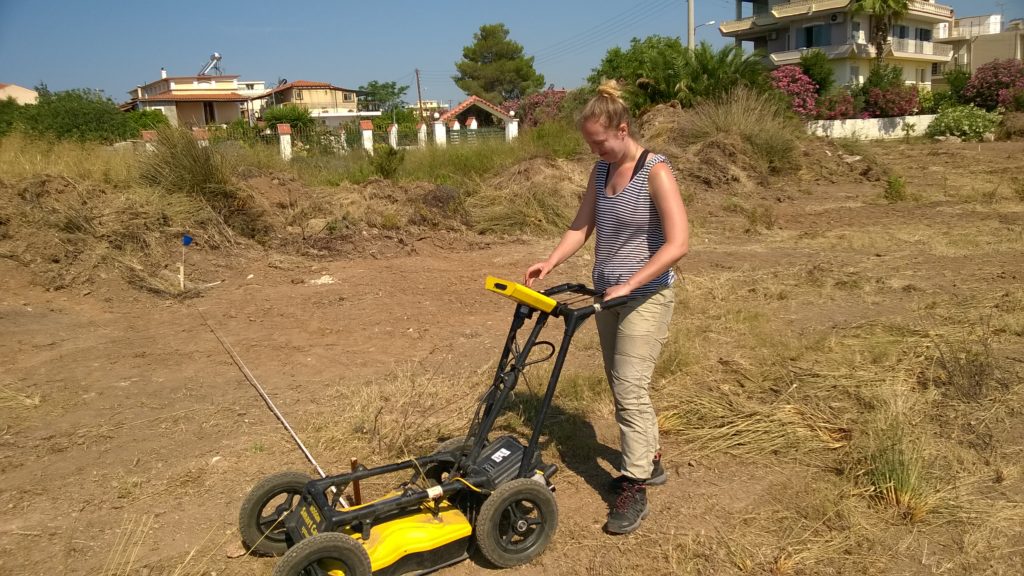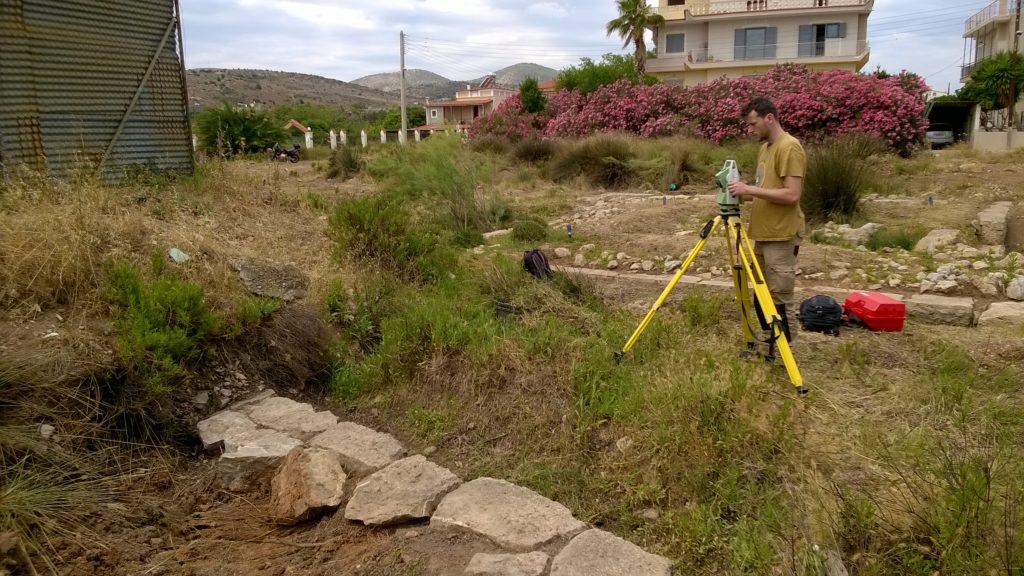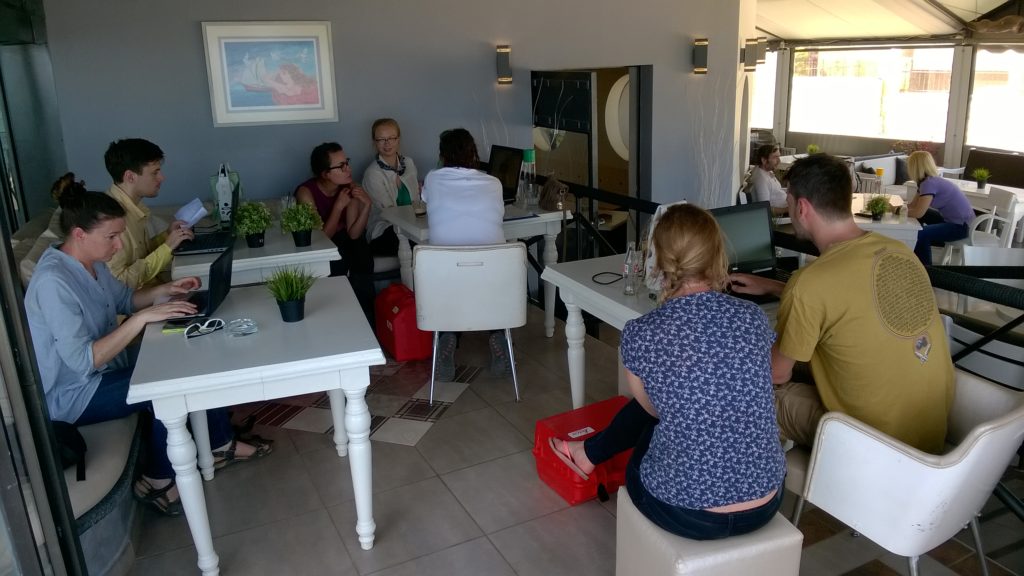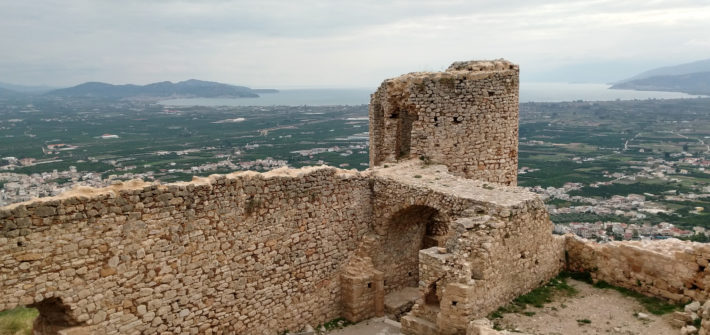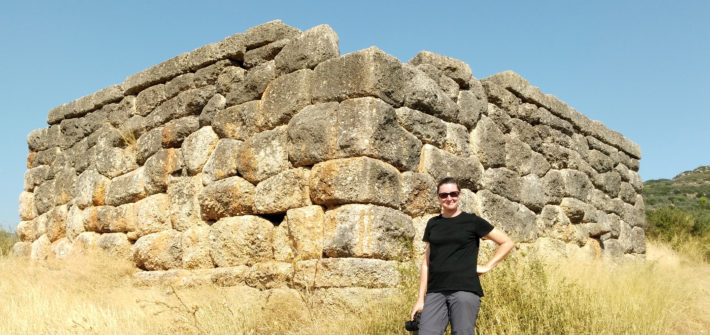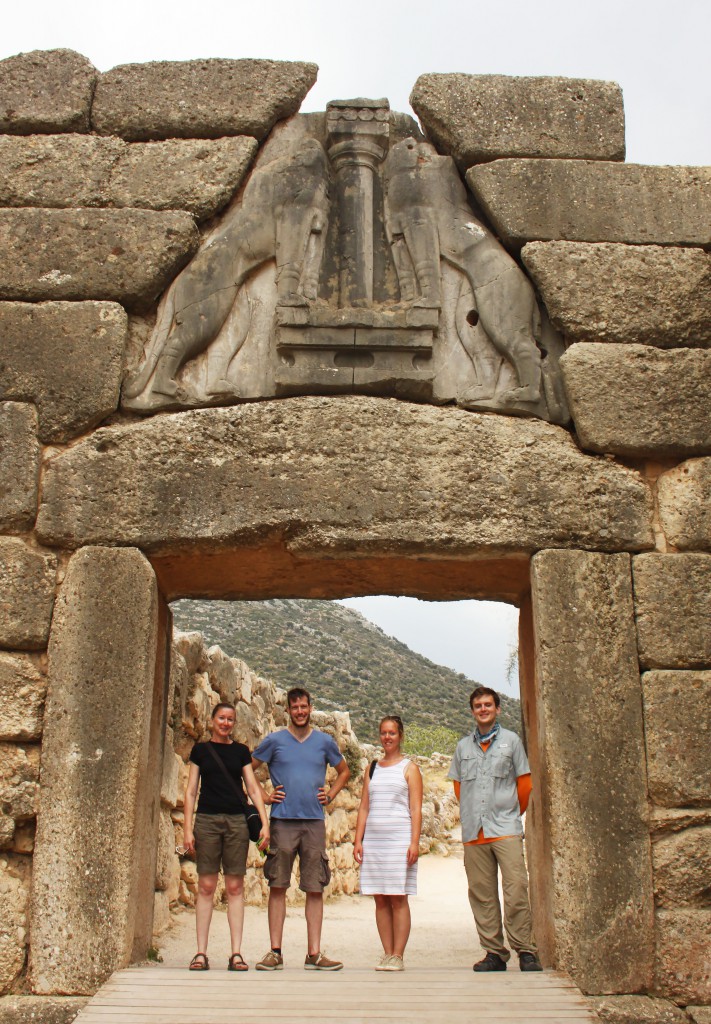Fieldwork | Methods | Regions | Sub projects | Field trips
About SETinSTONE
The research project seeks to investigate how human and natural resources, which interacted in the core regions of Mycenaean Greece, were employed by extant elites in order to implement their monumental building programmes. The research is carried out at the Faculty of Archaeology, Leiden University.
| Duration | 2015 – 2020 |
| Contact | Ann Brysbaert |
| Funding | ERC Condolidator Grant |
Research questions
- Why and how were building programmes executed in the core regions of the Greek mainland?
- Were the resources, human and other, available to carry this through?
- Can building to such an extent have had an impact, through exhaustion of resources, on the end of the Mycenaean civilization c. 1200 BC and, if so, what was the extent of its impact?
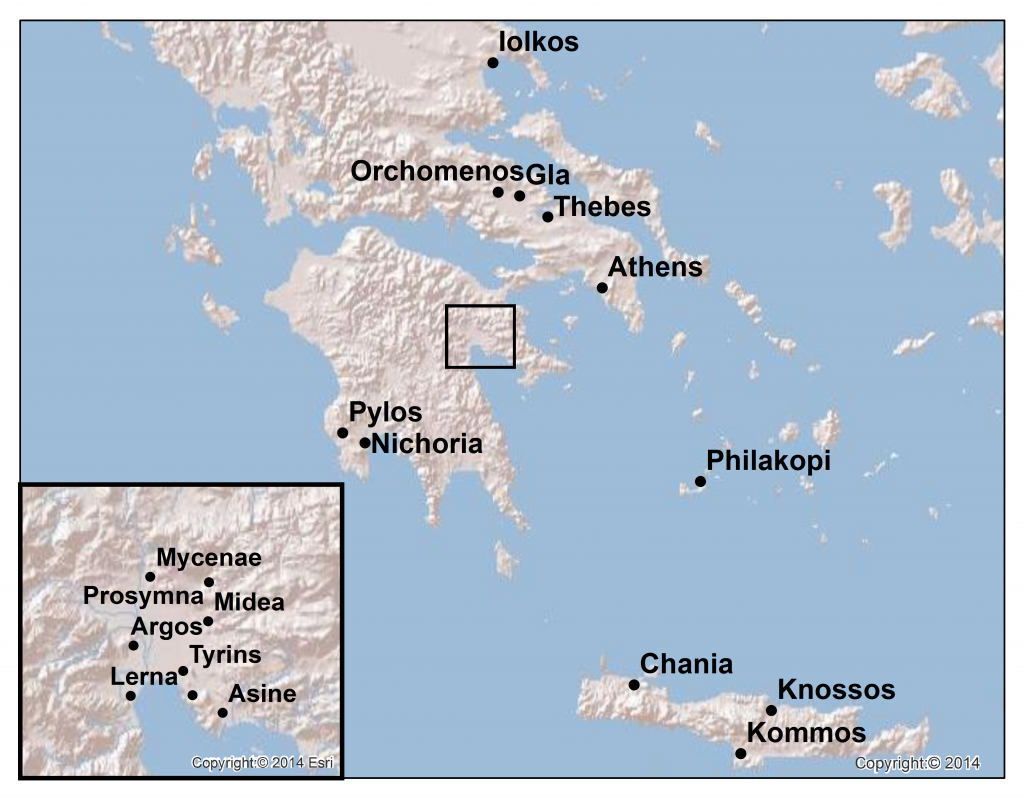
Project description
Greek Mycenaean monumental architecture has been well-studied. However, the extent to which large-scale building programmes contributed to the socioeconomic and political changes and crises that took place in Late Bronze Age Greece (c.1600-1100 BC) has not been studied.
The project aims to investigate human and natural resources which interacted in the core regions of Mycenaean Greece. There, elites mobilized these resources to implement their monumental building programmes. It seeks to reveal how and why these constructions were accomplished, and what impact such large-scale prolonged building programmes had on the population over time. Methodologically, practical building processes and inherent social practices are captured via an interdisciplinary methodology consisting of econometric, statistic, anthropological and theoretical approaches.
This combination of approaches is novel in its scope because it brings together in a unique way the wide range of scattered data available on many aspects of human ecology and past economies of the region. As such, multi-layered data sets will illuminate the many interconnected networks of human and resource interactions that impacted on people’s day-to-day activities, first, but also on the economic, cultural and socio-political situations over time in these regions.
The analysis of the local Mycenaean phenomena shaping this period will be embedded into the wider ongoing debate of the societal ‘collapse’ indicative of the final phases of the Late Bronze Age in the East Mediterranean. More generally, this project aims to understand which role local Mycenaean phenomena played in this much larger context. As such, this project contributes in demonstrating the long-term insights archaeological research achieves in studying and understanding very human issues, and it illustrates the contemporary relevance of archaeological studies today and for the future.

One of the room exits in the East Galleries, Tiryns (Greece)
ΤΟ ΠΡΌΤΖΕΚΤ
Το ερευνητικό έργο αποσκοπεί να εξετάσει την αλληλεπίδραση ανθρώπων και φυσικών πόρων, οι οποίοι απασχολούνταν από τις υπάρχουσες ελίτ στις κύριες περιοχές της Μυκηναϊκής Ελλάδος, ώστε να υλοποιήσουν τα μνημειακά αρχιτεκτονικά τους σχέδια. Η έρευνα διεξάγεται από το Τμήμα Αρχαιολογίας, του Πανεπιστημίου του Λάηντεν.
| Διάρκεια | 2015 – 2020 |
| Επικοινωνία | Ann Brysbaert |
| Χρηματοδότηση | ERC Condolidator Grant |
Ερωτήσεις Έρευνας
- Γιατί και πώς πραγματοποιούνταν οικοδομικά έργα στις κύριες περιοχές της ηπειρωτικής Ελλάδος;
- Υπήρχε διαθεσιμότητα φυσικών πόρων και ανθρώπινου δυναμικού για να υλοποιηθούν;
- Υπάρχει πιθανότητα η εκτενής οικοδόμηση να επηρέασε την κατάρρευση του Μυκηναϊκού πολιτισμού, γύρω στο 1200 π.Χ., εξαιτίας της εξαντλήσεως των πρώτων υλών, και αν ναι ποιό ήταν το εύρος των επιπτώσεων;
Περιγραφή του πρότζεκτ
Η ελληνική μυκηναϊκή μνημειακή αρχιτεκτονική έχει μελετηθεί εκτενώς. Ωστόσο, δεν έχει μελετηθεί ο βαθμός στον οποίο μεγάλα αρχιτεκτονικά έργα συνέβαλαν στις κοινωνικο-οικονομικές, πολιτικές αλλαγές και κρίσεις που σημειώθηκαν στην Ελλάδα την Ύστερη Εποχή του Χαλκού (c.1600-1100 π.Χ.). Αυτή η μελέτη στοχεύει να διερευνήσει την αλληλεπίδραση ανθρωπίνων και φυσικών πόρων στις κύριες περιοχές της μυκηναϊκής Ελλάδας. Οι ελίτ σε αυτές τις περιοχές, αξιοποίησαν αυτούς τους πόρους για να υλοποιήσουν τα μνημειακά αρχιτεκτονικά τους έργα. Η έρευνα, επιδιώκει να αποκαλύψει τον τρόπο και τον λόγο για τον οποίο πραγματοποιήθηκαν αυτές οι κατασκευές και τις συνέπειες που επέφεραν, με την πάροδο του χρόνου στον πληθυσμό, τα μεγάλα παρατεταμένα οικοδομικά έργα. Η πρακτική των οικοδομικών διαδικασιών και των εγγενών κοινωνικών συνηθειών, αποδίδονται μέσω μιας διεπιστημονικής μεθοδολογίας αποτελούμενη από οικονομετρικές, στατιστικές, ανθρωπολογικές και θεωρητικές προσεγγίσεις. Αυτή η συνδυαστική προσέγγιση καινοτομεί, διότι συγκεντρώνει με μοναδικό τρόπο το ευρύ φάσμα των διάσπαρτων δεδομένων, που υπάρχουν σε πολλές πτυχές της Ανθρωποοικολογίας και τις προηγούμενες οικονομίες της περιοχής. Ως εκ τούτου, τα πολυεπίπεδα σύνολα δεδομένων θα διαφωτίσουν αφενός, τα πολλαπλώς αλληλένδετα δίκτυα αλληλεπιδράσεων ανθρώπων και πόρων που επηρέασαν τις καθημερινές δραστηριότητες και αφετέρου, τις οικονομικές, πολιτιστικές και κοινωνικοπολιτικές καταστάσεις που επικρατούσαν στις περιφέρειες αυτές. Τα τοπικά μυκηναϊκά φαινόμενα που διέπουν αυτή την περίοδο, θα ενσωματωθούν στην ευρύτερη συζήτηση για την κοινωνική «κατάρρευση», ενδεικτική των τελικών φάσεων της Ύστερης Εποχής του Χαλκού στην ανατολική Μεσόγειο. Γενικότερα, η έρευνα στοχεύει να κατανοηθεί ο ρόλος που διαδραμάτισαν τα ανωτέρω, σε ευρύτερο πλαίσιο. Ως εκ τούτου, η έρευνα συνεισφέρει στη μελέτη και κατανόηση των ανθρώπινων ζητημάτων, παρουσιάζοντας τις μακροπρόθεσμες προβλέψεις που επιτυγχάνονται μέσω της αρχαιολογικής έρευνας. Επιπλέον, απεικονίζει τη σύγχρονη σημασία των αρχαιολογικών μελετών για το παρόν και για το μέλλον.
